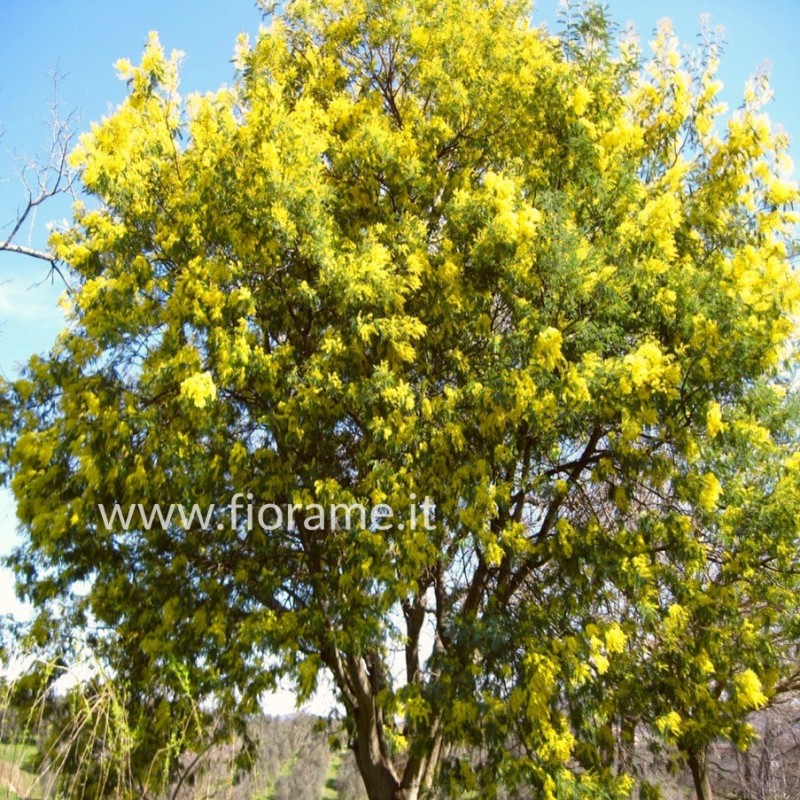





(taken from the book of Alfredo Cattabiani "Florario. Myths, legends, and symbols of flowers and plants", Editions of Oscar Mondadori. A book to read and consult ! )
L'8 march, the day the international of the woman, is celebrated with a sprig of mimosa: it is a custom born in Rome in 1946.
Once the war, the 8th of march was celebrated also in Italy: in a preparatory meeting in the capital, the idea was born to put the pride a flower that would characterise the day.
"We wanted a flower to be found in the beginning of march," reports one of the protagonists of that choice, Marisa Rhone "because at the time the greenhouses were few and there were fewer flowers in the air. To us, the young roman were so in mind those trees covered with yellow flowers, when the trees were still bare, that grew lush in the many gardens of Rome and Castelli."
The mimosa, which in botany is called Acacia dealbata, was introduced from Tasmania in Europe at the beginning of the last century.
Its current name generates, however, to confusion, because it may confuse Acacia dealbata with the Mimosa pudica. The latter, though belonging to the same family of the Mimosaceae, is a plant with semi-woody cutting, high not more than sixty centimeters, thorny, flowers pink-violet, which is native to Brazil. Is called prudish or, in Italian, a psychic, because at the slightest touch the leaves they fold one over the other, while the segments are matched between them, and the petiole is lower.
The stimulus spreads from one leaf to another on the same branch, so that could not fail to inspire, in addition to the botanical name, also the symbol of Modesty.
The proposal of the Rhone and of his companions, he succeeded, and the la mimosa fiorita was offered by the children's mothers, boyfriends to girlfriends, from husbands to wives, from managers to clerks. A happy choice also symbolically because the mimosa indicates the passage from death to a state of light in the light.
It is a symbolism that is common to all of the acacias that have represented the idea of Resurrection in pre-christian religions, and the risen Christ in the early Churches of the East and of Egypt; this feature is found in the company of hermetic texts of the middle Ages and in the Masonry.
In an ex libris hermetic of the EIGHTEENTH century, coming from Poitiers, and reproduced by Louis Charbonneau-Lassay in the Garden of the wounded Christ, the acacia as a symbol of the risen Christ, and has three roots teachers, and three branches of the masters, because the Redeemer is resurrected at the dawn of the third day.
The tree door on a tree trunk and the Pelican that revives its young with the foot-washing of his blood, and is surrounded by the serpent - circle, the ouroboros, the emblem of the Eternal; it is the same meaning of the figures of the Sun and of the Moon which is placed on the two species of the obelisks to the right and to the left of the acacia, are, together, a symbol of Glorification and Eternity, as explained by Charbonneau-Lassay.
It is, therefore, an emblem of Rinasdta, of Victory; but, being a plant that is exceptionally vital and robust despite its fragile appearance, could summon the Energy "hidden" femininity.
If the mimosa is a creation of the Italian, the international women's day was born in the United States may 3, 1908, at a gathering of women, socialist, held at the Garden Theater in Chicago, where the party held every Sunday for a conference.
At that time there was no lecturer, and women took the opportunity to organize the first international women's day.
The initiative was then proposed to level the international and many of the nations began to be celebrated, but on different dates: only in 1921, were consolidated to march 8, by the second conference of women communists in Moscow, in memory of the day of the first manifestation of the workers of Petersburg against the tsarist regime, which had been held in 1917.
Related products